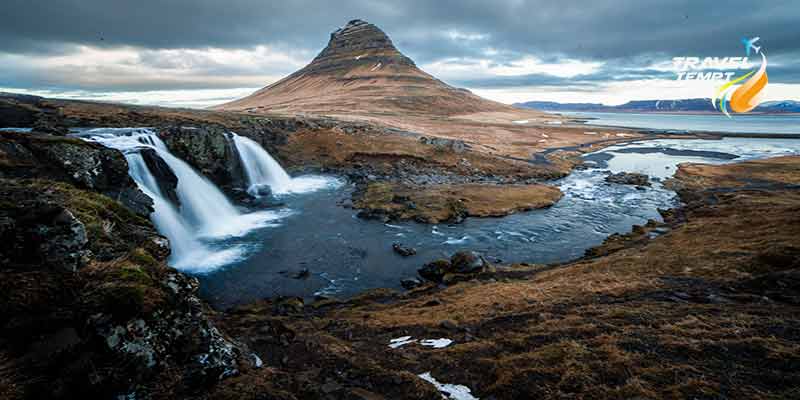The Iceland Mountains are a tribute to the grandeur of nature and a haven for adventurers. The Mountains in Iceland stand out among the country’s many natural treasures and entice tourists and adventure seekers from around the world.
Iceland’s mountains are a geological marvel that the forces of nature have shaped over millions of years. These mountains distinguish themselves through their wild setting, breathtaking summits, and diverse formations.
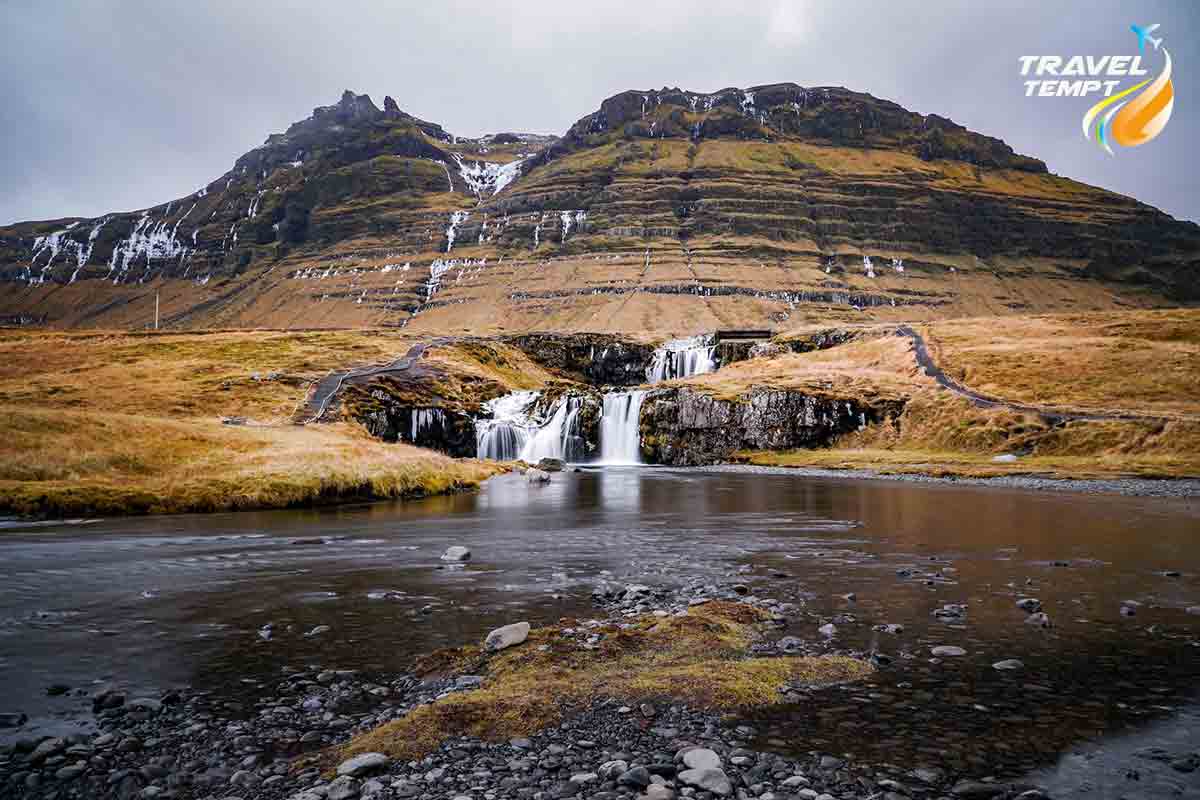
Due to Iceland’s location on the Mid-Atlantic Ridge, its mountains are predominantly of volcanic origin. These majestic giants, which are frequently cloaked in mystery, are a reminder of Iceland’s turbulent past.
Also Read: Iceland in November
1. Hvannadalshnjúkur – The Highest Peak
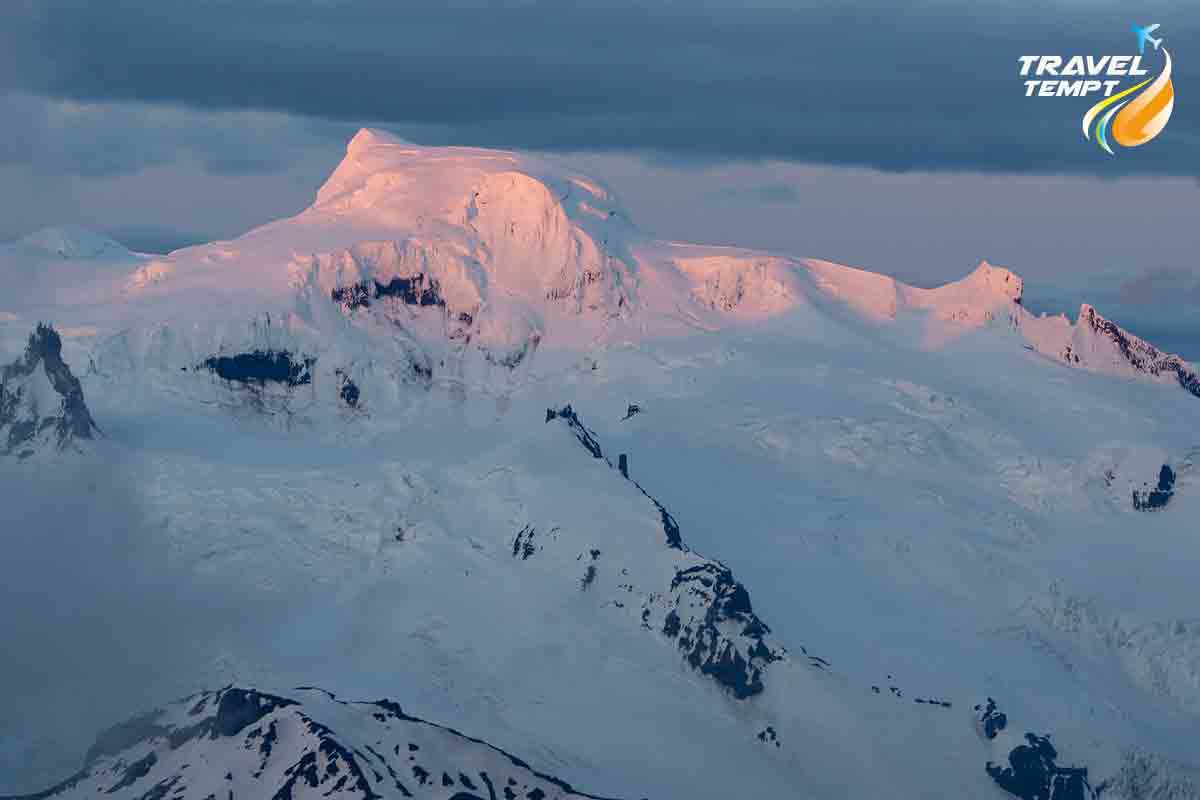
Location: Öræfajökull volcano in Vatnajökull National Park, Iceland
Hvannadalshnjkur, the tallest mountain in Iceland, is a spot where the earth and sky meet in a stunning showing of nature’s majesty. Visitors who are brave and adventurous flock there because of its intimidating heights and challenging ascent.
Hvannadalshnjkur, the tallest sentinel in this realm of enchantment, stands at a magnificent 2,110 meters (6,922 feet) above sea level. From Diamond Beach, you will be able to see Hvannadalshnjkur Mountain.
A flawless covering of shimmering ice and snow covers Hvannadalshnjkur’s peak. As you climb, you’ll enter a world of white and be encircled by Vatnajökull, the biggest glacier in Europe, with its icy splendor.
2. Herðubreið Mountain – The Queen of Icelandic Mountains
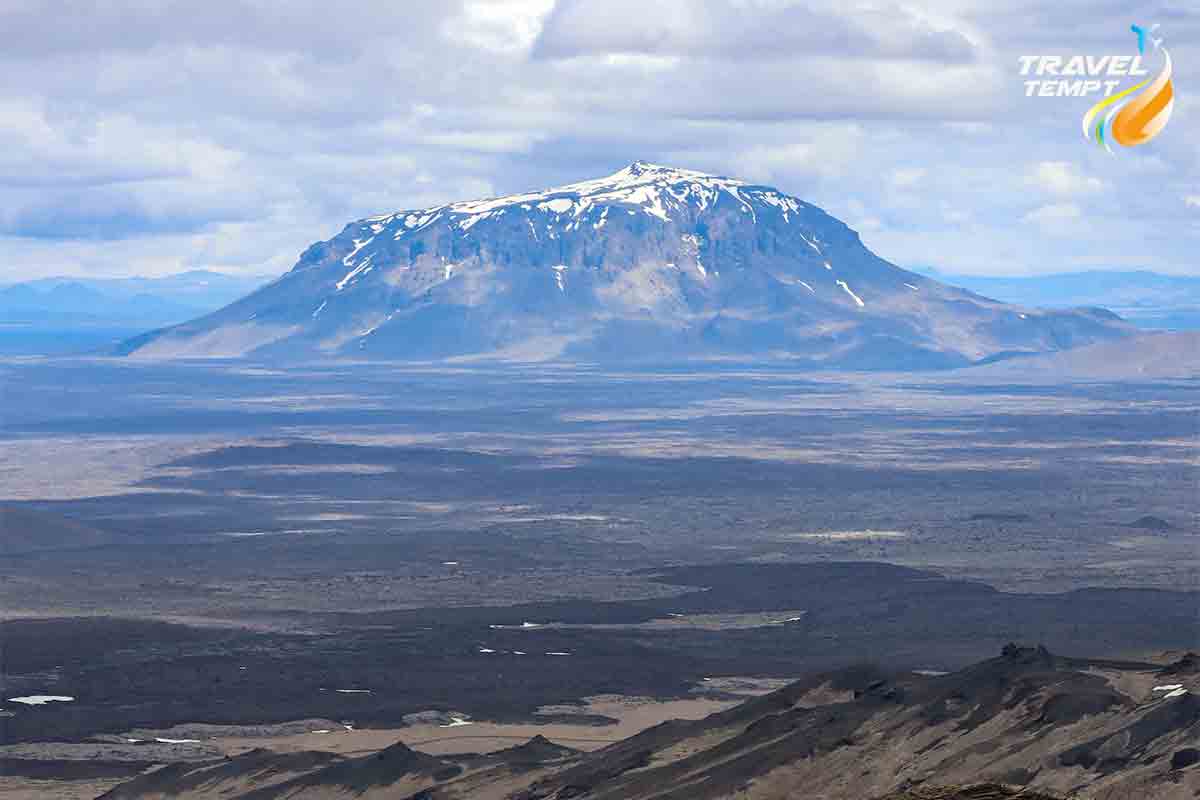
Location: Northeastern part of Iceland, Vatnajökull National Park.
The “Queen of the Icelandic Mountains” The geological formation of Herubrei is particularly noteworthy. It is a classic example of a table mountain, or “tuya.”
Herubrei is notable for its unusual flat top, which contrasts sharply with the surrounding scenery. The mountain’s peak is quite flat and frequently covered with snow and ice. Herubrei’s steep and craggy sides add to its intimidating and majestic aspect.
Also Read: Diamond Beach
3. Kirkjufell – The Church Mountain
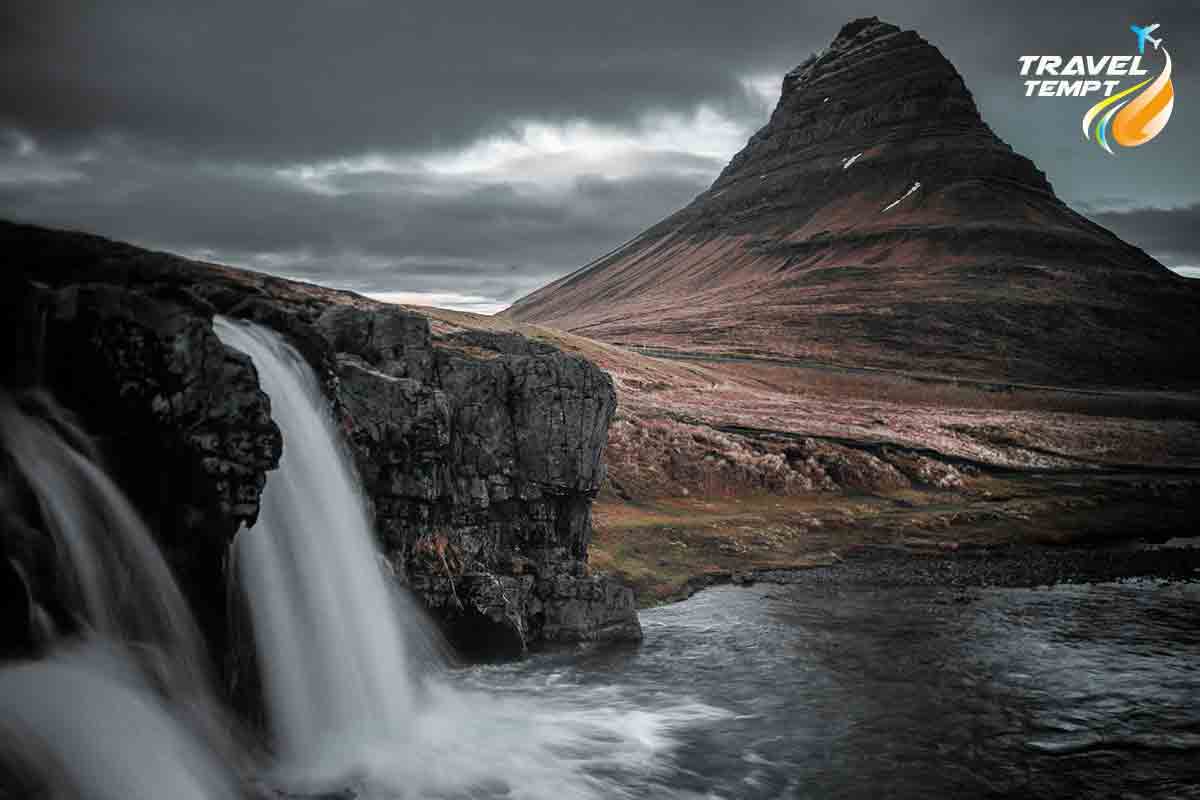
Location: Snæfellsnes Peninsula in West Iceland.
One of the most famous and recognizable attractions is Kirkjufell Mountain, also known as “The Church Mountain.” With a height of 463 meters (1,519 feet), Kirkjufell is notable for its pyramidal shape. That’s why it’s called “Church Mountain”—it resembles a natural church steeple.
This church mountain Iceland hiking options are available for adventurers of all experience levels. The top is reached by a somewhat difficult climbing track that rewards trekkers with breathtaking views of the nearby area.
The Northern Lights, popularly known as the Aurora Borealis, can be seen magnificently from Kirkjufell.
Photographers love Kirkjufell, especially in the summer when the midnight sun illuminates the scene with a mellow, golden glow.
Its stunning splendor has also been highlighted in several movies and television shows, especially HBO’s “Game of Thrones.”
4. Esja – The Capital’s Guardian
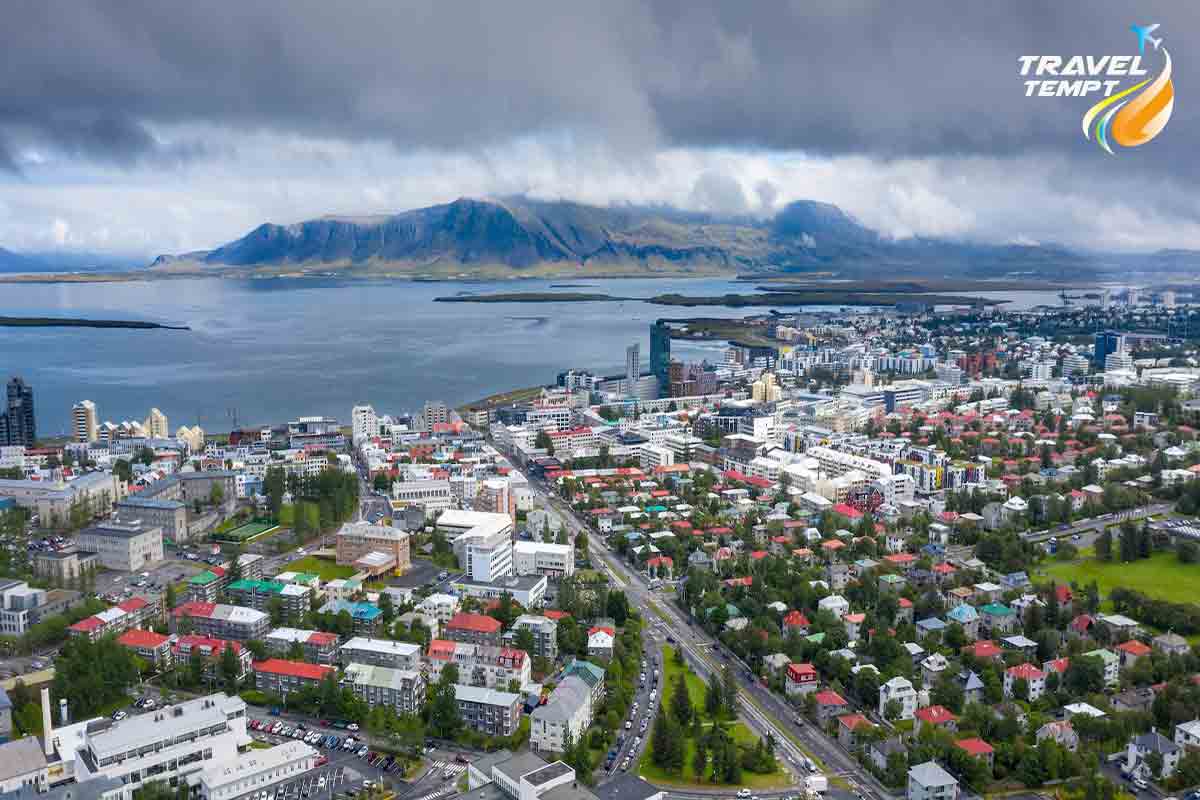
Location: In Kjalarnes in the South West area of Iceland.
Esja is conveniently located for tourists visiting the capital as it is only about 10 kilometers to the north of Reykjavik.
These Iceland Mountains are also known as The Guardian of Reykjavik. Both locals and visitors love to visit this magnificent peak because it is a renowned natural icon.
It is a well-liked location for day hikes and other outdoor activities due to the close location to the city.
Esja is a group of volcanic hills and mountains rather than a single terrain. The most prominent summit in the range is known as Þverfellshorn, which rises to an elevation of 780 meters.
A breathtaking panorama of Reykjavik, Faxaflói Bay, and the surroundings can be seen by reaching the famous mountain in Iceland.
5. Hekla – The Gateway to Hell
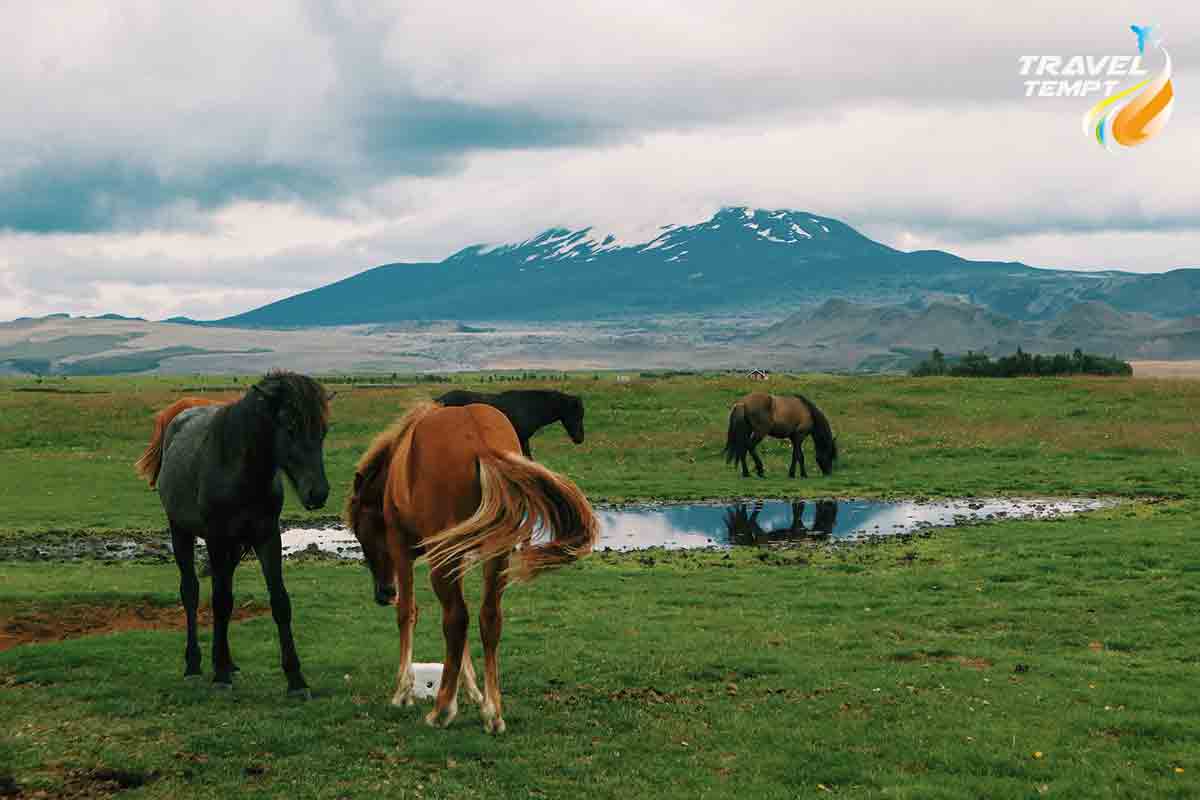
Location: Near the southern end of the eastern rift zone in Iceland.
One of Iceland’s most well-known and active volcanoes is Hekla, often known as “The Gateway to Hell.” It has a terrifying reputation due to its eruptive drama, historical significance, and towering grandeur.
Hekla is a stratovolcano, so layers of volcanic rock, ash, and lava flows have molded it into a conical shape. The volcano’s steep slopes and craggy peaks give it a striking appearance. It’s 1,491 meters (4,892 feet) above sea level.
Iceland and the surrounding areas have been significantly affected by Hekla’s eruptions. Due to the emission of volcanic gasses and aerosols into the atmosphere, they have produced ashfall, hampered transportation, and even altered global climate patterns.
Also Read: Rialto Bridge
6. Snæfellsjökull – The Enigmatic Glacier-Capped Mountain
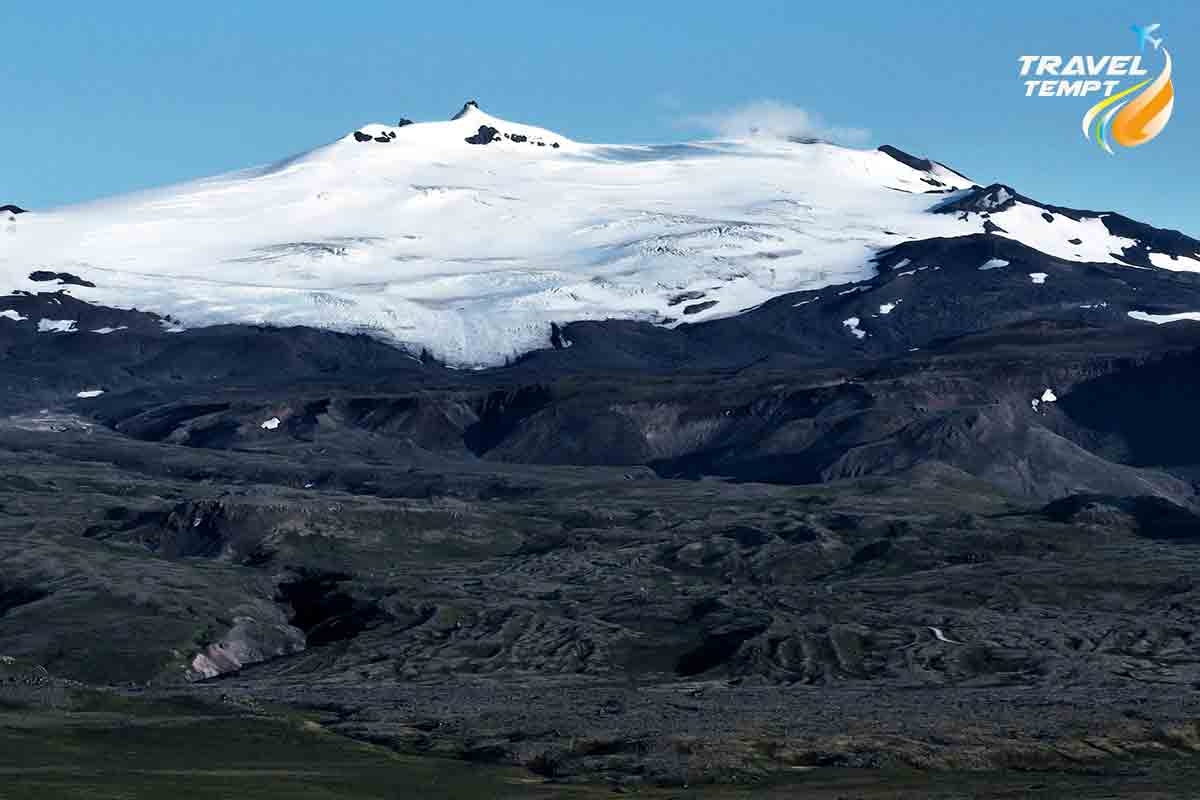
Location: Western part of the Snæfellsnes peninsula in Iceland.
One of Iceland’s most famous and enigmatic landmarks is Snaefellsjökull, often known as “The Enigmatic Glacier-Capped Mountain.” This conspicuously located glacier-capped volcano in western Iceland has long grabbed the attention of adventurers, visitors, and writers.
On the peak of Snaefellsjökull, a glacier extends over a region of around 11 square kilometers (4.2 square miles). Although it isn’t as big as other of Iceland’s larger ice caps, it does help to heighten the mountain’s mysteriousness, especially when compared to the dark volcanic rock below.
Jules Verne’s book “Journey to the Center of the Earth” brought Snaefellsjökull to the attention of the entire world. The Iceland Mountains serve as the explorers’ starting point for their trek deep inside the Earth’s core in the book. The mysticism and attraction of the mountain have been enhanced by its literary link.
7. Eystrahorn – The Eastern Horns
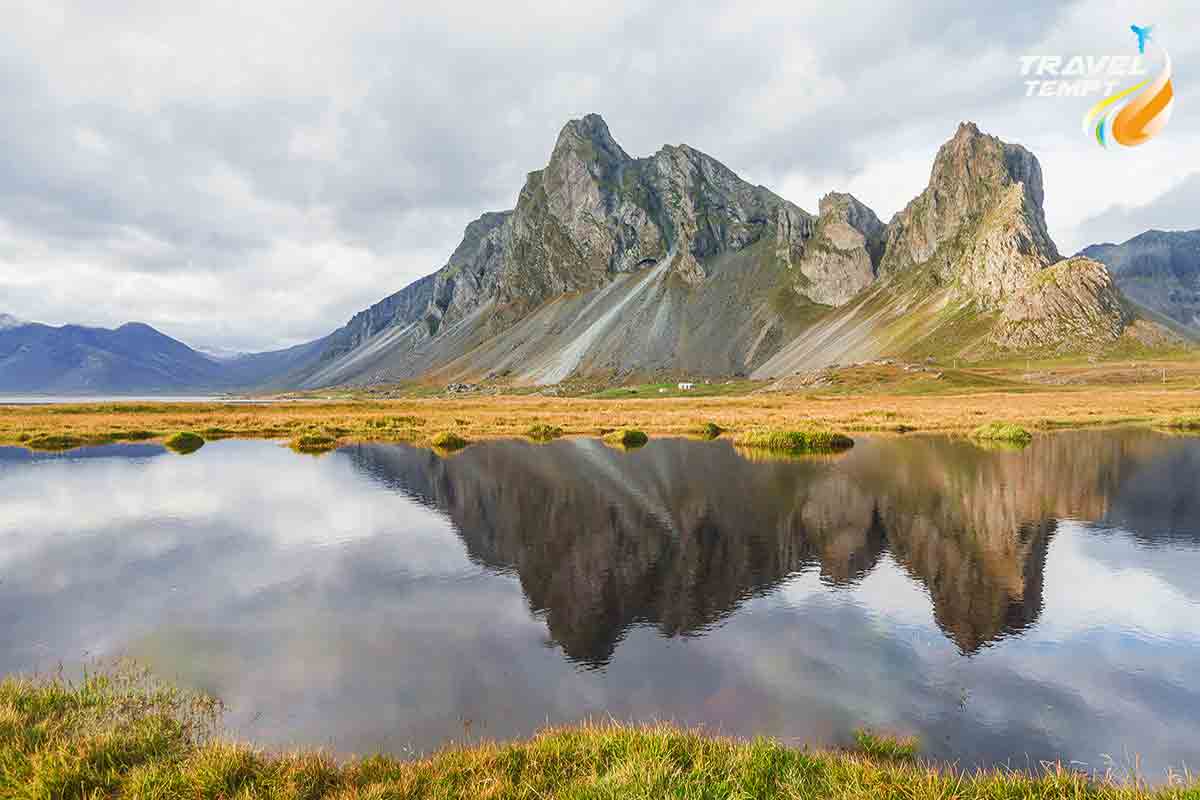
Location: Near Höfn and Djúpivogur on Hvalnes Peninsula.
This beautiful mountain in southeast Iceland is also called “The Eastern Horns.” Its rugged beauty, distinct twin peaks, and a variety of landscapes make this geological structure unique.
The mountain range’s name, Eystrahorn, comes from two distinctive summits called “horns.”
Adventurous and nature lovers frequently travel to the Iceland Mountains. Numerous hiking paths wind through the region, offering chances to explore the hilly terrain and the atmosphere.
Visitors can also enjoy the majestic mountains and the breathtaking coastal beauty at Eystrahorn because of its proximity to the ocean. The contrast between the jagged peaks and the calm waves of the ocean produces beautiful scenery.
Conclusion
Iceland’s Mountains serve as a reminder of the nation’s diversity and stunning natural surroundings. Each of them has its unique appeal and fascination, whether they are old volcanoes or towering summits. Explore these magnificent Icelandic mountains, whether you’re a seasoned mountaineer or just a casual hiker—it’s a trip you will never forget.
Of course, exploring Iceland’s highlands is generally safe, but it’s necessary to be prepared and knowledgeable about the geography and weather.
The summer months (June to August) provide milder weather, which makes hiking perfect. But every season brings its specific beauty.
Absolutely! There are several volcanoes in Iceland’s mountains, and visitors can go on close-up tours of some of them.
Yes, camping is a great way to explore the uninhabited peaks of Iceland, but make sure you respect the Leave No Trace rules.
Yes, you’ll find a lot of guided excursions available for individuals who want professional direction and regional knowledge.
